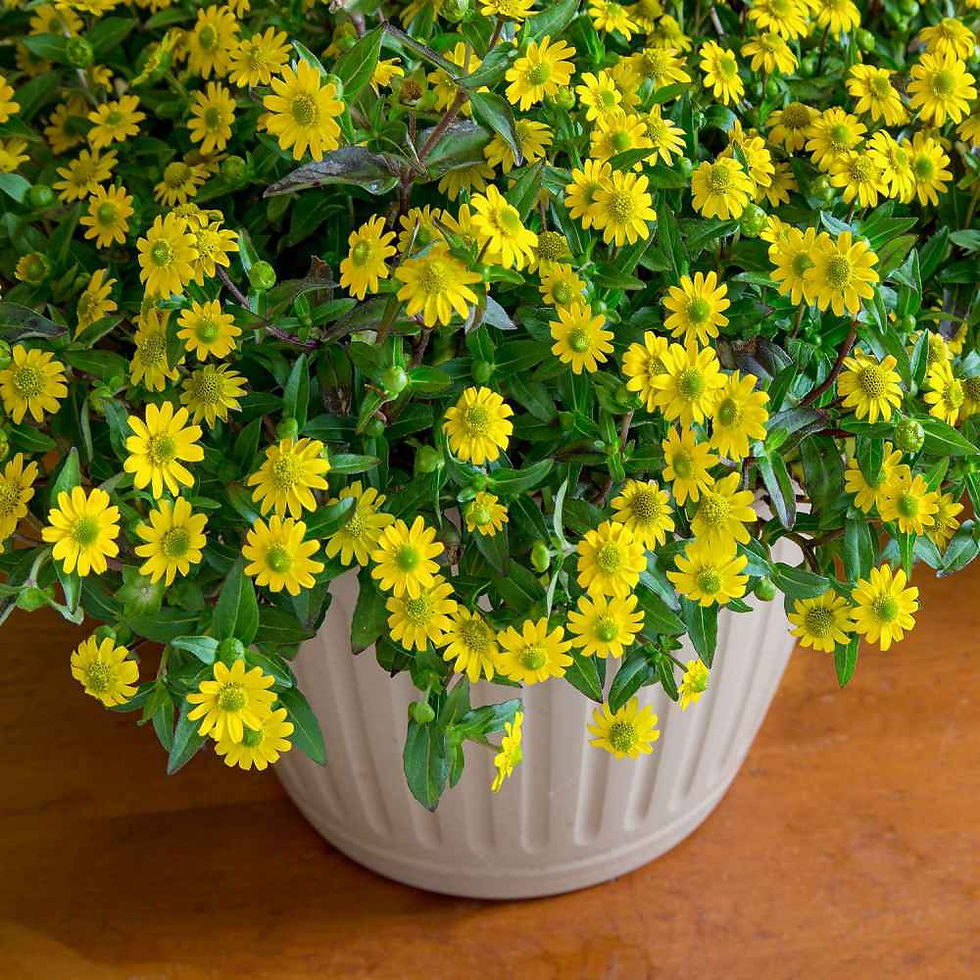QTY: 1oz Approximately 285 seeds.
Helianthus annuus
Get the best of both worlds with giant sunflowers and seeds for snacking. But you are going to have to get out there and harvest the seeds before the birds do! This heirloom variety reaches an impressive height.
Sunflowers were named for their habit of turning their faces to the sun. At the beginning of their development, they exhibit heliotropism or following the sun in its course from east to west, though the mature blossoms usually end up facing straight east. These versatile plants have an ancient history, beginning with Native American tribes across North America as early as 2000 BC. The seeds were used for their oil, ground up for meals, or simply eaten as a snack; the plant also provided dye and medicinal ointment. In 18th century Europe, sunflowers were widely used both in gardens and for making cooking oil; the production of this heart-healthy oil eventually became a major industry both in Europe and America. These are said to be the happiest of flowers, and in the language of flowers, they symbolize loyalty and constancy.
HOW TO GROW
Sowing: This seed should be sown directly outdoors since the long roots of this plant need space to develop and dislike being disturbed. In late spring after the soil has warmed to 70-75 degrees F, plant several seeds together 1" deep and 6" apart in rich, well-drained soil; the seeds will begin to germinate in 8-10 days. The protection of netting or a screen may be necessary to prevent birds or animals from eating the seeds as they begin to sprout and develop; keep the soil moist. Thin to the strongest seedlings.
Growing: Water the seedlings occasionally as they develop. Mature plants tolerate drought well, though they may need regular fertilizing for the best growth. Avoid overwatering, since this can cause disease. This plant attracts bees, butterflies, and birds.
Harvesting: For fresh flowers, cut the stems 11/2-2 feet in length and at an angle of 45 degrees. Strip off any leaves that will fall below the water level; place the stems in water immediately. For the longest vase life, recut the stems and replace the water every three days. To save the seeds for eating, first, cover the heads with a protective fabric covering such as cheesecloth to discourage the birds and squirrels. As the heads ripen, they will drop their petals; the back of the head will turn from green to brown, and the seeds will develop a hard coating. Cut the heads, leaving several inches of stem. Hang them to dry in a protected, well-ventilated area. Remove the seeds by gently rubbing the dried heads. Store the seeds in an airtight container.
Seed Saving: To save the seeds, cover the heads with a protective fabric covering such as cheesecloth to discourage the birds and squirrels. As the heads ripen, they will drop their petals; the back of the head will turn from green to brown, and the seeds will develop a hard coating. Cut the heads, leaving several inches of stem. Hang them to dry in a protected, well-ventilated area. Remove the seeds by gently rubbing the dried heads. Store the seeds in a cool, dry place.
FACTS
Common Names: Mammoth Grey Stripe
Latin Name: Helianthus annuus
Species Origin: US Native Wildflower
Type: Garden Flowers
Life Cycle: Annual
USDA Zones: 1, 2, 3, 4, 5, 6, 7, 8, 9, 10, 11, 12
US Regions: California, Mountain, Arid/Desert, Plains/Texas, Midwest, Northern, Northeast, Southeast
Stratification: No Stratification
Germination Ease: No Stratification
Sunlight: Full Sun
Height: 84 Inches
Color: Yellow
Bloom Season: Blooms Late Summer, Blooms Early Fall
Uses: Cut Flowers, Deer Resistant
top of page
$3.99Price
Related Products
bottom of page




































